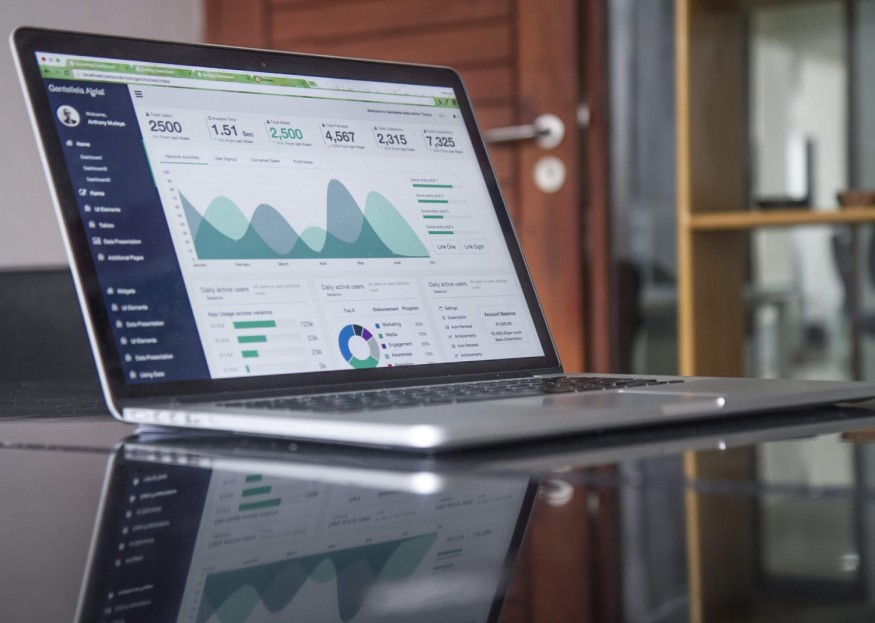
It's almost impossible to quantify the impact of science on humanity, but UNESCO offers a clue. It defines science as "the greatest collective endeavor" helping man in countless ways, from prolonging his physical life to nourishing his spirit.
True enough, one must only look around to see science at work in everyday life, whether personal or business. For marketers, in particular, science is a powerhouse of calculated benefits.
Marketing has benefited so much from science that it has become a science itself. It was first offered as a course at the Universities of Illinois and Michigan in 1901, drawing on older disciplines like economics, psychology, and accounting.
Today, science remains a guiding force behind the most impactful marketing decisions that drive success for top companies like Facebook, Netflix, and Spotify. Beyond numbers and data, age-old ideas from various disciplines, such as the following, help marketers nail down their goals with confidence:
1. People can make rational or irrational choices (behavioral economics)
Behavioral economics is at the root of this idea, which espouses that people ideally gravitate toward the most beneficial and satisfying options. But because human beings are vulnerable to distractions, such as cognitive bias, emotions, and outer influence, they can also make irrational choices and act against their own interests.
Suppose Jessica is looking to book a hotel for an upcoming trip. The rational choice theory states that if she wants to travel on a budget and has done thorough research, she will go for a quality hotel with decent savings.
According to behavioral economics, the hotel she books can still depend on factors like cognitive bias, social influences, and emotions. After viewing an online ad for a hotel that offers luxurious services and amenities, like spa facilities and in-room coffee and tea, she may deviate from her original plan of traveling on a budget and book an expensive hotel.
Marketers can use behavioral economics to develop campaigns that elicit desired consumer behaviors. For example, ads promoting pricey hotels are banking on this human tendency to make irrational choices, such as spending more money than necessary for accommodation. This strategy is simple, inexpensive, and yet naturally effective because it is based on human nature.
2. Brain activity can predict human behavior (neuroscience)
Human thoughts, emotions, behavior, and consciousness are all products of brain activity. Therefore, analyzing a person's neural patterns through brain imaging and other techniques makes it possible to predict and even manipulate their response to future stimuli. This analysis is the core principle of neuroscience, or, to marketers, neuromarketing.
While often branded as an extravagant frontier science, neuromarketing has solidified itself in the last five years, thanks to several groundbreaking studies proving its value to marketers.
In the famous 2011 study by Hyundai, 15 men and women were asked to look at car prototypes while connected to electroencephalogram (EEG) machines. The test recorded their brain activity as they looked at different design features. By the end of the study, researchers aimed to identify the types of stimulation most likely to lead to a purchase.
The findings eventually led to Hyundai's decision to change the model's exterior design, and the company's marketers would have also designed a campaign consistent with the new knowledge they discovered through the study.
3. Data provides insights for smart decision-making (data analytics)
Data analytics concerns examining data to generate meaningful, actionable insights that aid decision-making. It is a three-stage process that begins with collection and storage, processing and organization, and analysis and visualization.
While marketers have analyzed data since marketing became a science, today's methods and techniques are far superior and more effective. Thanks to digital technology, data analytics models can simultaneously monitor every customer activity and touch point across multiple channels and devices.
Marketing can use data analytics in several ways, especially the following:
Recommendations - After watching a few rock music videos on YouTube, a person might find rock music video suggestions at the top of the site's landing page on their next visit
Customer churn prediction - After analyzing complaint information and identifying customers on the brink of stopping business, a company can target them by offering discounts, freebies, and other treats to make them stay
Customer segmentation - Companies can analyze customer data, create subgroups, such as "mothers" or "health buffs," and run unique promotions appealing to each category
Market basket analysis - This technique analyzes a customer's past purchases to determine related products they may also buy. The marketer then promotes those associated products to the customer to make them buy more per transaction
Opinion mining - A restaurant losing sales can analyze data points from restaurant review websites and other online places to know what people say about them.
In a study, 87.8 percent of executives said their companies invested more in data, analytics, and AI in 2022. Eighty-three percent of this group is expected to invest even more in the current year.
4. When in doubt, experiment (A/B testing)
Towards the end of the 1900s, the first A/B test was conducted by William Sealy Gosset, statistician, chemist, and head brewer for Guinness, a popular beer company. But another statistician named Ronald Fisher first discovered the process's fundamental principles and turned it into a science in the 1920s.
A/B testing is an experiment that tests two versions of the same thing to determine which one performs better. The process can provide businesses with the data necessary to maximize their marketing budget.
Let's say your team needs to implement an email campaign to promote a new product. In an A/B test, half the target audience will receive email version A while the other half will receive email version B.
You can assess the results according to preset conversion rate goals, such as how many people clicked the link in the email, submitted a form, or purchased the new product. After analyzing the available data, marketers can decide whether to use email version A or B, increasing the campaign's return on investment (ROI).
Even without research, it's easy to see how A/B testing can improve marketing results, but at least one study demonstrates it. Based on evidence from 35,000 startups in 2021, A/B testing helps businesses scale faster, launch more products, and get more funding. Reputable industry knowledge websites like Bizpedia offer indispensable help in understanding results and making relevant decisions based on these outcomes.
5. Decision-making can come down to math (decision theory)
Oxford Languages defines decision theory as a mathematical approach to decision-making, where different risks or expectations of gain or loss are examined based on their likely results.
Decision theory is useful in marketing for various scenarios, such as predicting customer churn, creating a budget, and deciding between two advertising media channels. Let's take the third scenario as an example.
Since running an ad set costs $200 on Channel 1 and $180 on Channel 2, it seems like Channel 2 is the better option because it costs less. But decision theory requires evaluating risk versus reward using factors like current industry data, data from past projects, and time and budget constraints before making any conclusions.
In the example, both channels present a 50 percent chance of success or failure, with a return on investment (ROI) of $2,000 and a potential loss of $400 for Channel 1; and an ROI of $1,800 and a potential loss of $100 for Channel 2.
The marketer must determine the Expected Value (EV) for both channels to assess risk versus reward. The EV is derived by multiplying the channel's predicted success rate and ROI, multiplying its predicted failure rate and loss, and adding the two products. Using this formula, EV would be $800 for Channel 1 and $850 for Channel 2.
While Channel 1 has a higher ROI, Channel 2 has a higher EV, which means the company loses less money. This predictive data allows marketers to choose wisely between the two channels. Decision theory can use different scientific models to arrive at decisions, such as cost-benefit analysis, SWOT (strengths, weaknesses, opportunities, and threats), and decision trees.
Scientific Marketing Is Effective Marketing

It is human nature to fail but not science and its empirical truth. Perhaps nothing could be more telling of its power - to this generation at least - than the 14.4 million deaths prevented through COVID-19 vaccines, a pure work of science, in the first year of immunizations alone. Of course, the importance of data could not be overstated.
At the heart of all scientific success are bits of information converging to change the course of human history in one way or another, whether in medicine, biotechnology, education, electronics, psychology, and, of course, business. Marketers specifically can start with the five tested and proven ideas above, all borrowed from good, old, reliable science.
© 2025 ScienceTimes.com All rights reserved. Do not reproduce without permission. The window to the world of Science Times.











